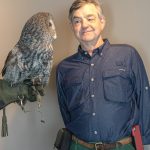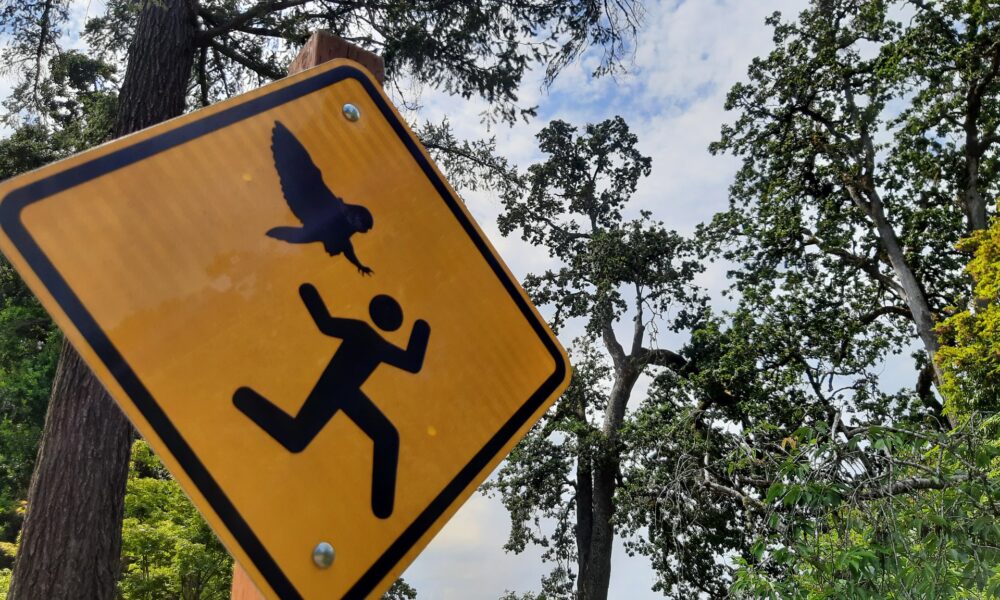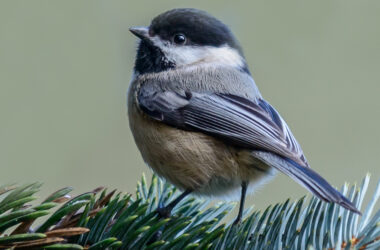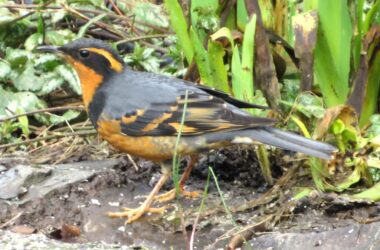I have not yet confirmed that it is a Great Horned Owl that’s attacked at least two men near Leslie Street in south Salem. But evidence points that way.
The map below with its Xs shows where the three known attacks have occurred.

If these are great horned owl attacks, there is probably a nesting pair in that vicinity. There is good open space nearby for hunting: the small Pringle Creek City Park to the north. Just to the south are over 90 acres in Bush’s Pasture Park, plus Deepwood Gardens adjacent to that.
Larger owls eat many rats and mice, including those ailing from manmade poisons. d-CON and other chemical rat killers will also kill any owl (or other predator) that finds the victim, dead or alive. Years ago we lived in San Francisco and the city decided to rid Golden Gate Park of its huge rat population. They used poison, and it killed all the great horned owls. It took fifteen years before the owls moved back into the park. The rats had come back long before that, moving in from nearby residential and business neighborhoods with significant restaurant waste.
Among the animals that the big owls will prey on: squirrels, rabbits, any careless birds not hidden by vegetation or in a cavity. More likely are nocturnal targets: smaller owls, possum, raccoon, skunk, mice, and rats. This brings us to the issue of rat control.
Right now the female and male will each hunt for their own meals at night. Once she has laid her first egg, the female must stay on, or near, the nest. She needs to keep the eggs warm, and protect them. Now the male is hunting for himself and mate. This could start as early as January. He now needs to make twice as many kills. A windy or stormy night could make hunting difficult. That might force him to hunt at dawn or dusk.
Once all eggs (2 to 4 usually) have been laid, the female must incubate for another 4-5 weeks. Once they begin hatching, the young need feeding and the father must bring even more food to the nest. The two parents will work at feeding the owlets as soon as the female feels she can leave them alone, usually at a few weeks after hatching are they are fully feathered. So there can be great horned owls hunting around Leslie Street and its neighboring open spaces well into spring.
If you are in the vicinity during darkness, wear a hat or hood. Or carry an opened umbrella above your head.
Read more about great horned owls nesting here.
For information about upcoming Salem Audubon programs and activities, see www.salemaudubon.org, or Salem Audubon’s Facebook page.
Harry Fuller is an Oregon birder and natural history author of “Freeway Birding” and the newly-published “Birding Harney County.” He is a member of the Salem Audubon Society. Contact him at [email protected] or atowhee.blog. His “Some Fascinating Things About Birds” column appears regularly in Salem Reporter.
STORY TIP OR IDEA? Send an email to Salem Reporter’s news team: [email protected].
SUPPORT OUR WORK – We depend on subscribers for resources to report on Salem with care and depth, fairness and accuracy. Subscribe today to get our daily newsletters and more. Click I want to subscribe!

Harry Fuller is an Oregon birder and natural history author of three books: “Freeway Birding,” "Great Gray Owls of California, Oregon and Washington," and "San Francisco's Natural History--Sand Dunes to Streetcars." He leads birding trips for the Malheur Field Station. He is a member of the Salem Audubon Society, and leads bird trips locally. Harry has just published a new book, BIrding Harney County.









